How Many Cups Can a Coffee Truck Serve in a Day?

How Many Cups Can a Coffee Truck Serve in a Day?
Before you start a coffee truck, you should be able to determine your revenue potential and serving capacity. For example, you’ll likely want to estimate how many cups of coffee you will serve daily from your coffee truck.
This information will help you calculate your coffee truck revenue estimates and give you a good idea on whether your mobile coffee truck will be worth the cost. It will also help you better plan your menu and the orders you’ll need to place with your vendors.
In this article, we will focus on the factors that influence how many cups you’ll be serving and those that you should consider as you plan and start your coffee truck business.
It can also be a helpful discussion when considering your future sales for your brick-and-mortar coffee shop or your drive-thru coffee stand. Ultimately, my goal is to help you boost your revenue and increase your coffee truck's profitability.
Further Reading: Are Coffee Trucks Profitable?

Key Factors Impacting Daily Coffee Serving Capacity
Coffee Customers’ Demand at each Time and Location:
Your location, the time of day, and the type of customer at each location will impact the number of cups you serve.
For example, you might serve coffee at a local train station from 8:00 a.m. to 1 p.m. every day and serve 200 cups of coffee a day. However, if you altered your schedule and started serving coffee at 7:00 a.m. in time for the first train rush, you might serve an additional 40 to 50 coffees that hour. This would lead to an additional significant income boost.
Same location. Different time. Significant revenue increase.
The time and location must align with your target customers' needs or demands for coffee. Your job is to ensure that you’re serving the right things at the right time and place. This is one of the biggest challenges for coffee truck owners. However, you'll likely be more equipped to respond to this challenge once you develop a feel for your local market.
Your Coffee Truck Menu Complexity:
Depending on your coffee truck customers, you’ll likely benefit from offering a variety of menu options that help speed up your transactions. For example, having brewed coffee and more complex espresso-based drinks available can increase your coffee truck revenue while keeping the line moving.
It might take only a minute to serve drip coffee and 4 minutes to serve up a latte. Offering food or snacks that take a long to prepare might lead to fewer transactions.
Operational Efficiency:
 If you are looking to churn customers interested in catching the next train or bus, they will be less interested in pour-over brews, latte art, and slower options. Therefore, you’re chosen coffee equipment will have to be chosen for speed, efficiency, and even improved capacity.
If you are looking to churn customers interested in catching the next train or bus, they will be less interested in pour-over brews, latte art, and slower options. Therefore, you’re chosen coffee equipment will have to be chosen for speed, efficiency, and even improved capacity.
This might mean opting for a semi-automatic espresso machine or commercial coffee grinder with a doser that allows you to make espresso drinks much faster.
Your Coffee Truck Layout and Workflow:
Your coffee truck workflow design will be a considerable part of your planning – or at least should be. Whether you have a coffee truck or a coffee trailer, you may have to adapt to your mobile unit’s natural constraints in your design. Nevertheless, developing an optimized layout will help you better serve customers quickly and may make it physically more accessible for you to move around.
If you are considering purchasing a used coffee truck, step in and do a mock-up of your workflow. If you are purchasing a truck to refurbish, picture where everything will need to be to optimize your workstation for efficiency. Even the smallest adjustments can increase the capacity and speed of serving coffee.
Coffee Truck Hours of Operation:
All things being equal, the longer you stay open, the more customers (and coffee cups) you’ll likely sell. Likewise, if you calculate on a weekly, monthly, or quarterly basis, you’ll sell more coffee the more days you operate your coffee truck.
Finding the sweet spot – selling during the correct hours on the right days at the right location, with the right menu can improve your coffee cup sales – and maximize your daily coffee sales.
Further Reading: Coffee Truck Ideas
![]()
Average Your Sales Numbers Based on Common Scenarios:
While operating a mobile coffee truck, you’ll likely encounter some common scenarios impacting your serving. While you may have typical day-to-day coffee serving, the beauty of having a coffee truck means that you can serve at many different events and locations. Each may offer various levels of sales, such as the ones below:
High-Traffic Events: (150 – 500 cups of coffee a day)
You’ll likely want to participate in some high-traffic events like festivals, carnivals, and seasonal markets. A typical morning rush may last all day at high-traffic events. Preparing for events like this might require hiring additional staff, having extra inventory, and having the experience to process transactions quickly.
Regular Locations: (70 – 150 cups of coffee a day)
Volume at this level occurs at your regular coffee serving locations. These regular days may be mid-week with your expected foot traffic and sales. Of course, some of you will have busy regular days with specific rush hours.
Your regular coffee serving days at your regular location will likely be your “bread and butter” or primary source of income for your monthly sales goals.
Slow Days or Small Locations: (50-100 cups of coffee a day)
Some days, coffee sales volume will be slow. Indeed, you will encounter slow coffee sales days – some of which are expected and some surprising.
You’ll want to assess whether those days at those locations are worth your time and effort. Even if you have slow sales days in a particular spot, it may benefit your monthly sales goals. For example, while you have slow days during the week, the same location is incredibly busy on the weekends, and your presence during the rest of the time is more to develop consistency and brand awareness among potential customers and pedestrians, as well as to defend your coffee truck serving spot.
Slow coffee serving days can also train staff, deep clean your coffee truck, improve, order your coffee inventory, and perform other duties.
Further Reading: How to Start a Coffee Trailer Successfully
How Many Cups Can a Coffee Truck Serve in a Day?

Serving Coffee: Time Management and Reality
When running a coffee truck, time management is key to understanding how many cups you can serve daily. Let’s break it down: Making a latte takes around 3-4 minutes, including grinding the coffee (45 seconds), pulling the espresso shot (35 seconds), steaming the milk (40 seconds), and pouring and serving.
Working efficiently with one group head on a two-group espresso machine, you can make about two lattes in 4 to 5 minutes. That’s roughly 24-30 lattes per hour if you worked non-stop. However, you’ll need time to clean, restock milk and beans, syrups, and help customers, which considerably lowers that number.
On a busy day, serving around 80-130 cups is pretty reasonable, depending on your speed, workflow, and customer demand. If you’re a fast and well-trained barista, utilize more than two group heads, or have additional baristas to help, you can definitely do more. Still, adding menu items like brewed coffee or cold brew would help speed up the line significantly.

Tips to Maximize Daily Serving Capacity
You’ll always want to create greater efficiencies to reduce customer wait times. This often starts with the design of your coffee truck, equipment placement, and workspace.
Additionally, you’ll need to invest in the right equipment built for efficiency.
One important aspect of efficiency is offering a menu focusing on the most popular drinks that are also the fastest to make. Sure, you can make the most beautiful beverage and crepes your customer wants, but if your order takes 7 minutes, how long will it hold up your line? How many sales will you lose because of your coffee truck menu choices?
In addition to choosing the right menu, you will want to develop a pre-prep operation for items like syrups, other condiments, and brewed coffee that can speed up your customer turnaround times.
Finally, invest in training your staff to ensure quick and consistent service.

Seasonality and Your Coffee Truck Profits
Extreme weather can impact your daily coffee sales. More than traditional coffee shops, coffee trucks have more exposure to the elements. Understand that over a full year, depending on your location, the weather may limit your ability to work and serve coffee.
Whether it's decreasing the number of days or hours, your ability to serve coffee may be impacted. By planning ahead there are some important strategies you can take to increase your coffee trucks revenue during the winter.
For example, you may simply stop physical operation for a season and only sell coffee online. Either way, you want to make sure that you take steps during the harshest months. You will also want to take steps to winterize your coffee truck if you don't plan on using it for the winter.
Further Reading: Coffee Truck Ideas
![]()
How Many Coffee Cups Do Coffee Trucks Serve?
Conclusion
Various factors impact the number of cups of coffee you serve daily. We can control some things and create systems to maximize our earning-per-hour ratio.
As you make plans and changes, it will be essential to track your sales data regularly. Your coffee truck POS system should be able to tell you exactly how many cups of coffee you are serving, what your best sellers are, and what your busiest and slowest days are. Use that data!
After you have a good idea of how many coffee cups you are selling, develop realistic sales goals that will help you achieve your goals.
Are You Interested in Starting a Mobile Coffee Business?
 As you can see, the number of cups a coffee truck can serve daily depends on various factors such as customer demand, menu complexity, operational efficiency, location, and hours of operation. The good news is that you control all of these factors!
As you can see, the number of cups a coffee truck can serve daily depends on various factors such as customer demand, menu complexity, operational efficiency, location, and hours of operation. The good news is that you control all of these factors!
So, by understanding these sales volume factors and optimizing your coffee truck’s workflow, equipment, and menu offerings, you can maximize your daily sales potential and increase your coffee truck revenue.
This is important to do before you buy a coffee truck. However, if you are already operating a coffee truck, even the slightest modifications geared toward efficiency can have a huge impact on coffee sales.
Nothing worth doing goes without measuring. Therefore, track your sales data through your coffee truck POS system. The numbers will be crucial for identifying trends, setting realistic sales goals, and fine-tuning your sales strategy.
With careful planning and continuous tweaks, barista training, and improved food and beverage prep, your coffee truck can serve as many cups as your business goals demand while providing a satisfying customer experience.

Get The Ultimate Guide!
How to Start Your Mobile Coffee Business
Our guide walks you through every step of launching your own mobile coffee business, providing the expert insights you need to succeed.
✅ Practical Tips and Insider Knowledge: Get hands-on advice on everything from choosing your mobile unit to crafting a unique coffee experience.
✅ Build a Profitable Business: Discover how to find the best locations and market your mobile coffee business to attract a loyal customer base.
✅Start with Confidence and Save Money: With our comprehensive guide, you'll have all the tools and knowledge to kickstart your journey into mobile coffee entrepreneurship – more affordably and quickly.
Order The Ultimate Mobile Coffee Business Guide
Successfully Plan and Launch Your Mobile Coffee Business
Affordable. Relevant. Comprehensive.
* The information on this page is for educational purposes only. We do not offer legal or investment advice.











